Few clubs across Europe — and, indeed, all of world football — have had as much of an astronomical rise as Göteborgs Atlet- och Idrottssällskap (GAIS) over the past few seasons.
A couple of years ago, GAIS were toiling away in Sweden’s third tier, a decade removed from their last appearance in Allsvenskan.
They had spent the vast majority of that 10-year period in Superettan, the nation’s second tier.
They had just been relegated from Superettan when previous assistant Fredrik Holmberg took over as manager, charged with helping Makrillarna bounce back.
This was Holmberg’s second job in senior football management.
His only previous experience came with Onsala BK, whom he led from Sweden’s fifth tier to the fourth tier.
Putting Holmberg in the managerial hot seat was a bold move from the team and Sporting Director Niklas Karlström, who had only been at the club himself for a little over a year when he appointed Holmberg as manager in November 2021.
His faith in the then-relatively inexperienced coach has been repaid tenfold since he made that call.
Holmberg has led GAIS to promotion not only once but twice, bringing them back to the pinnacle of Swedish football for the first time since 2012 this year.
Far from satisfied with just reaching Allsvenskan, GAIS has been giving an incredibly good account of themselves in the top flight this term; at the time of writing this piece, they sit fourth—just one point off Hammarby in the UEFA Europa Conference League qualification places.
Our tactical analysis will provide some insight into Fredrik Holmberg’s winning tactics at Gamla Ullevi.
The analysis will look at how the 44-year-old coach has moulded GAIS in his image over the past few years, clearly defining how he’s inspired a complete tactical turnaround for the club that had undoubtedly been heading in the wrong direction prior to his tenure as boss.
Fredrik Holmberg Tactics & Style Of Play
According to Capology, GAIS are competing with the sixth-lowest wage bill in Allsvenskan this season, highlighting just how well they’re doing to be sitting in fourth place at this stage of the campaign.
One standout statistic about Holmberg’s side this term is that they’ve got the fourth-best defensive record in Sweden’s top flight (27 goals conceded) at this point in the season.
They’re overperforming on their expected goals against (xGA), which currently sits at 33.63 — placing them ninth out of Allsvenskan’s 16 teams for that particular metric.
They largely have goalkeeper Mergim Krasniqi to thank for their xGA overperformance, as he has prevented 4.65 goals based on xG faced this term.
GAIS’s defensive record is one of the main elements of its performance, which has helped it earn the number of points it has earned so far this season.
Their 28 goalscoring record puts them 12th in the league in terms of putting the ball in the opponent’s net.
Stylistically, GAIS has evolved year after year under Holmberg as they’ve climbed the Swedish football ladder in some respects.
Naturally, as the competition has progressively increased in standard, Holmberg’s side has had to adapt to playing without the ball more and more.
This season, they have the third-lowest average possession percentage in their division, at 43.8%.
They don’t tend to play many passes on average per game this term but have in previous campaigns under Holmberg—another way in which the team has had to change up its style to some extent in 2024 to cope with the quality of Allsvenskan.
However, some stylistic aspects of Makrillarna have remained consistent throughout Holmberg’s tenure as manager, including their tendency to attack via the wings inside the final third and to be extremely ‘dribble-heavy’ in their offensive game.
Their wingers and central midfielders usually rank highly compared to other players in their division who play at the same position; this has remained the case in 2024.
Similarly, though their pressing intensity will differ from opponent to opponent in some manner, they don’t tend to sit off a lot.
They maintain a certain level of aggression in their out-of-possession game, which has been a key characteristic of Holmberg’s GAIS since taking charge in the third tier.
GAIS Out Of Possession Tactical Analysis
With all of that said, it’s clear that GAIS’ out-of-possession performance has been the most interesting aspect of their game from a tactical perspective this season and where they’ve really managed to impress on the Allsvenskan stage.
So, what is Holmberg’s side doing without the ball?
Since taking charge, Holmberg has consistently lined his team up in a 4-3-3 shape.
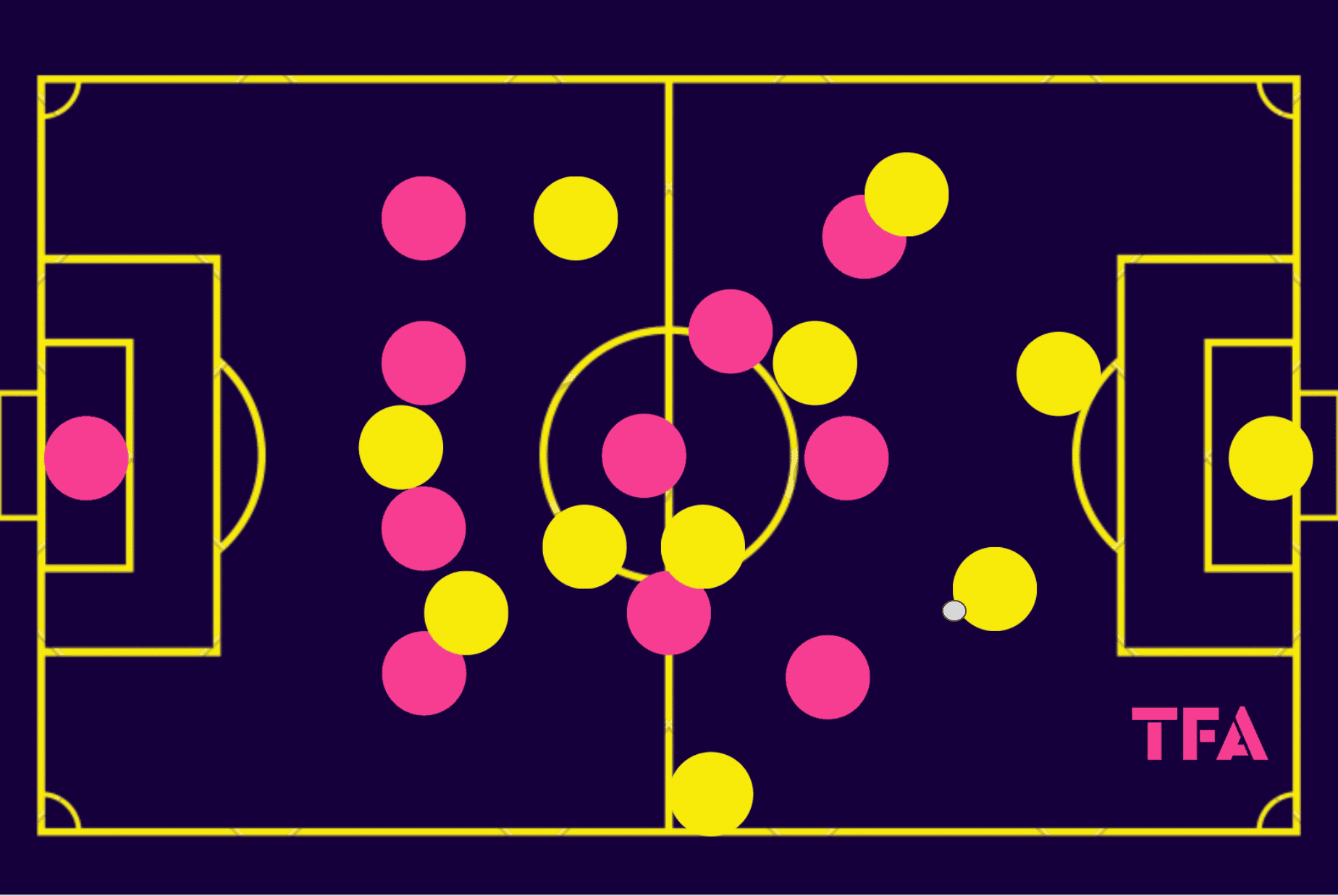
Figure 1 shows how GAIS (pink) line up when defending in a mid-block — the phase they’ll most often find themselves defending in, especially against stronger opposition when they’ll sit off a bit more to avoid being carved through via their quality when pressing high.
Here, with the image taken from their recent clash with league leaders Malmö, we see how in the mid-block, they allow the opposition’s centre-backs space to ass between them.
Still, the wingers will try to cut off passing lanes to the full-backs — sometimes keeping them in their cover shadow while closing down the ball-carrying centre-back from out to in.
GAIS’ centre-forward will often sit off and add a body to the middle of the park, ensuring those valuable central areas are sealed off.
At times, GAIS are vulnerable in the half-spaces when defending in the mid-block, as their central midfielders can go high, opening a gap between them and the backline.
In such cases, if the opponent has a skilful creator comfortable operating in little pockets of space which they can pick out, that playmaker can cause some devastation from the half-space.
In this particular case, the opposition did not set up to optimally exploit this space and failed to do so.
However, this is an area for opponents to try and target when playing against GAIS.
If the opponent can get by GAIS’ midfield—something that can happen due to the gap between the midfield and backline in the mid-block defensive phase or, more commonly, in transition—the centre-backs will step out as required and try to deal with the threat.
At the same time, Holmberg requires his midfield and wingers to be very hard-working and immediately track back to support the defence, something they typically do diligently.
This is indispensable for GAIS as they attempt to compete with stronger squads in Sweden’s top flight; the fact they’ve managed to do so to such an extent this term is a testament to their commitment, fitness, and organisation under Holmberg’s leadership.
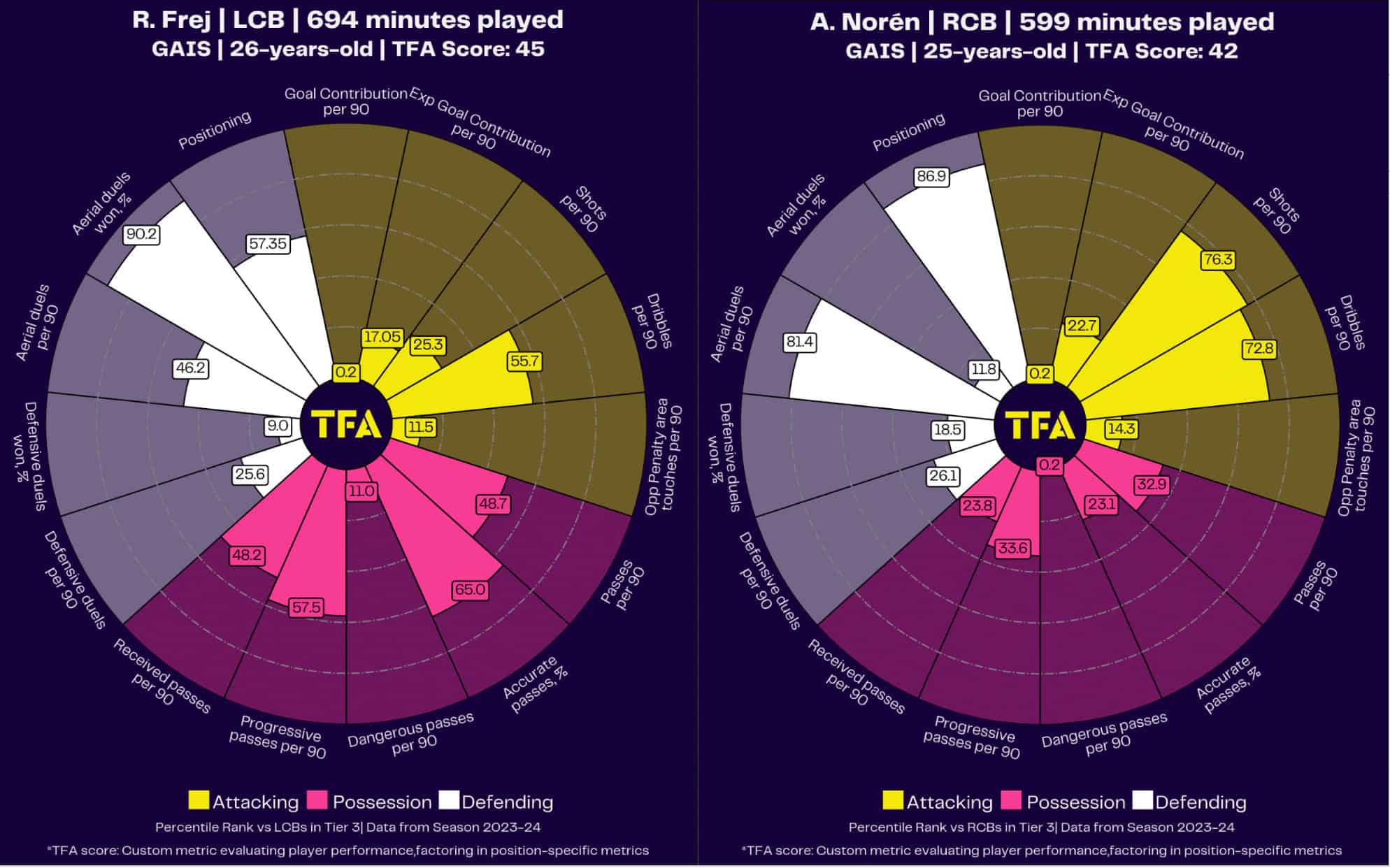
Their two main starting centre-backs this term are Robin Frej (who joined in the second tier last season) and Axel Norén (who’s been with the team since they were in the third tier in 2022).
Neither player performs very well in terms of defensive duel success, so forcing them to engage in a duel is, again, a decent tactic for opponents to try and utilise—further highlighting how GAIS can be obtained when defending in the mid-block/high-block or in transition.
That said, both defenders are decent in terms of their positioning—blocks, tackles, and interceptions—while Frej offers great security in the air, which helps GAIS defend against crosses.
This is particularly useful in the low block and in set-piece defence.
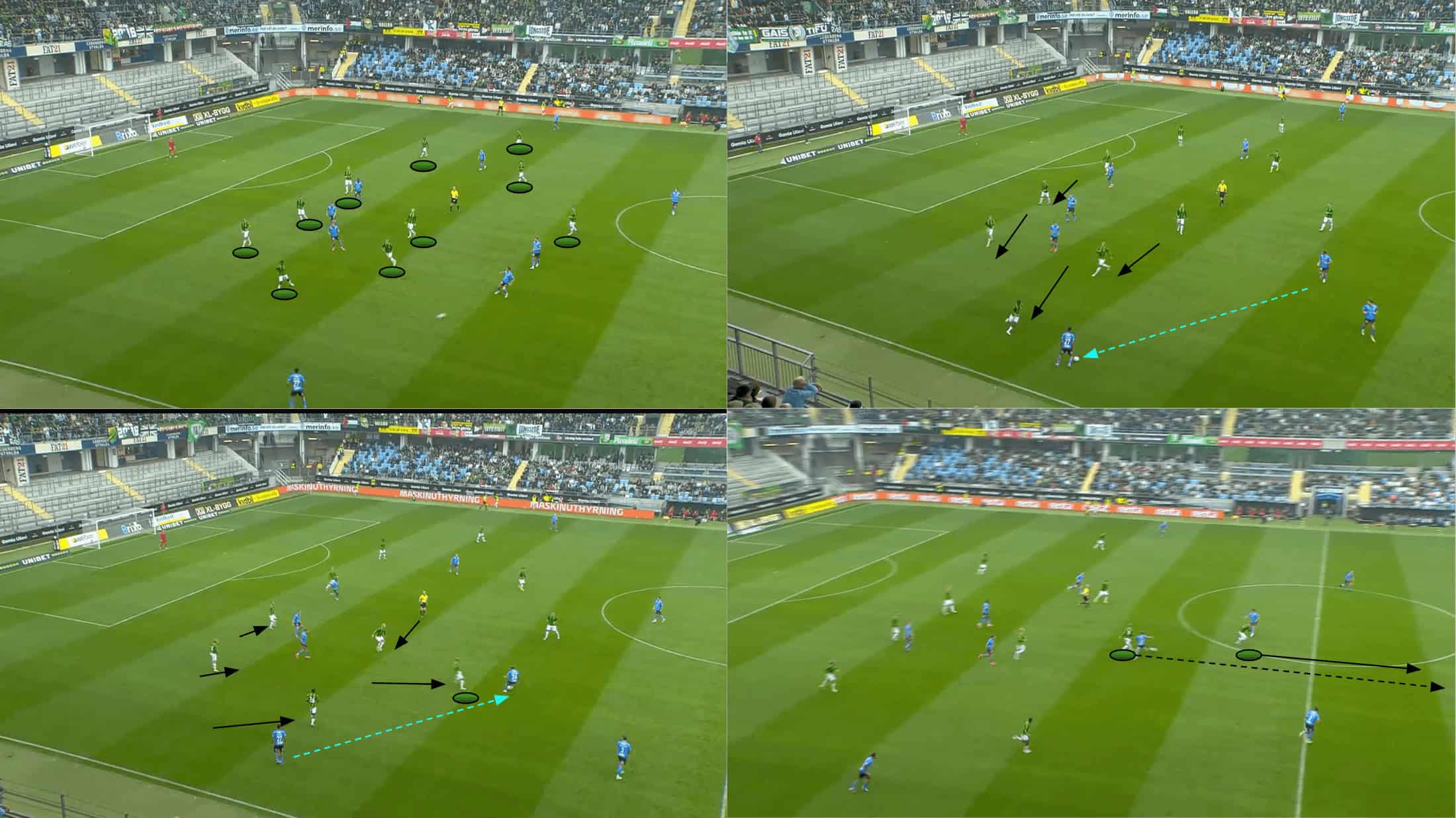
Speaking of the low block, we see an example of GAIS defending deeper here in Figure 3.
A good low block requires strict organisation, teamwork and mental energy.
GAIS frequently display a solid level of all that, making it quite difficult for them to break down when defending deep.
In our example above, we see an example of their midfield and backline shifting around and organising themselves as the opponent tries and fails to pull them apart and create gaps to exploit, as GAIS players constantly maintain compactness and offer adequate support for one another.
As soon as the opponent takes a heavy touch, GAIS’ right central midfielder is there to pounce, creating a great chance for Holmberg’s side to hit them on the counter.
As they’ve spent more time without the ball this term than in previous seasons under Holmberg, they’ve had to become more reliant on direct play, with high-passing sequences becoming few and far between.
GAIS has done well in transition and from direct attacks in regular possession; they’ve done well to make the most of their limited time with the ball in 2024—plenty of their goals have directly resulted from organised and patient defensive play, which was rewarded with an opportunity, as we see in Figure 3.
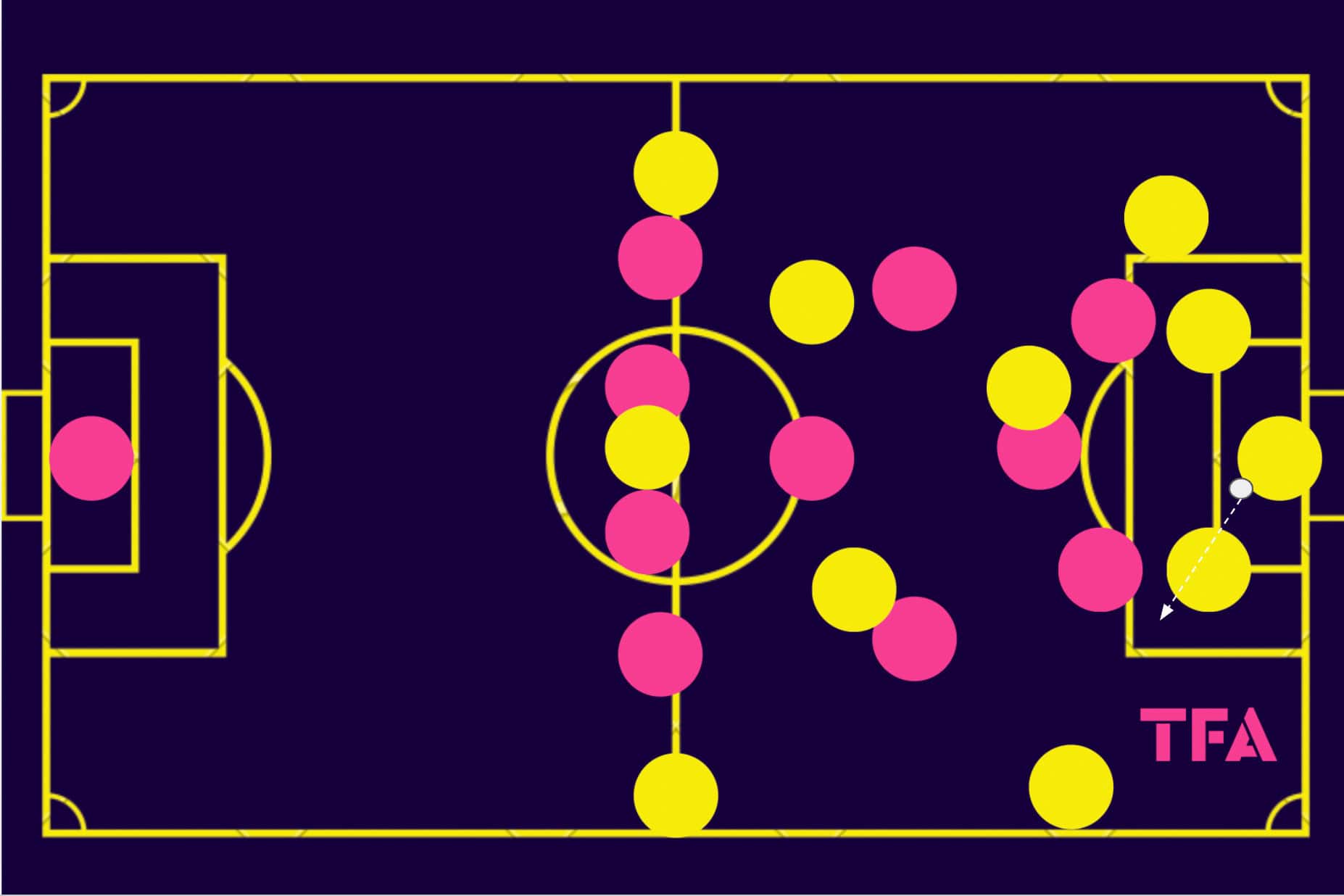
GAIS have continued pressing high in plenty of games this season, with Figure 4 sharing an example of how they shaped up in a high-block against Västerås in a recent Allsvenskan game.
GAIS’ wingers came narrow, retaining access to each of the opposition’s centre-backs positioned just on the corners of the six-yard box on either side of the goalkeeper.
Meanwhile, the centre-forward sat a small bit deeper, covering off the pass to the holding midfielder.
Then, GAIS’ right and left central midfielders positioned themselves slightly wider, retaining access to the wings if needed while also covering the opposition’s central midfielders positioned in their respective zones.
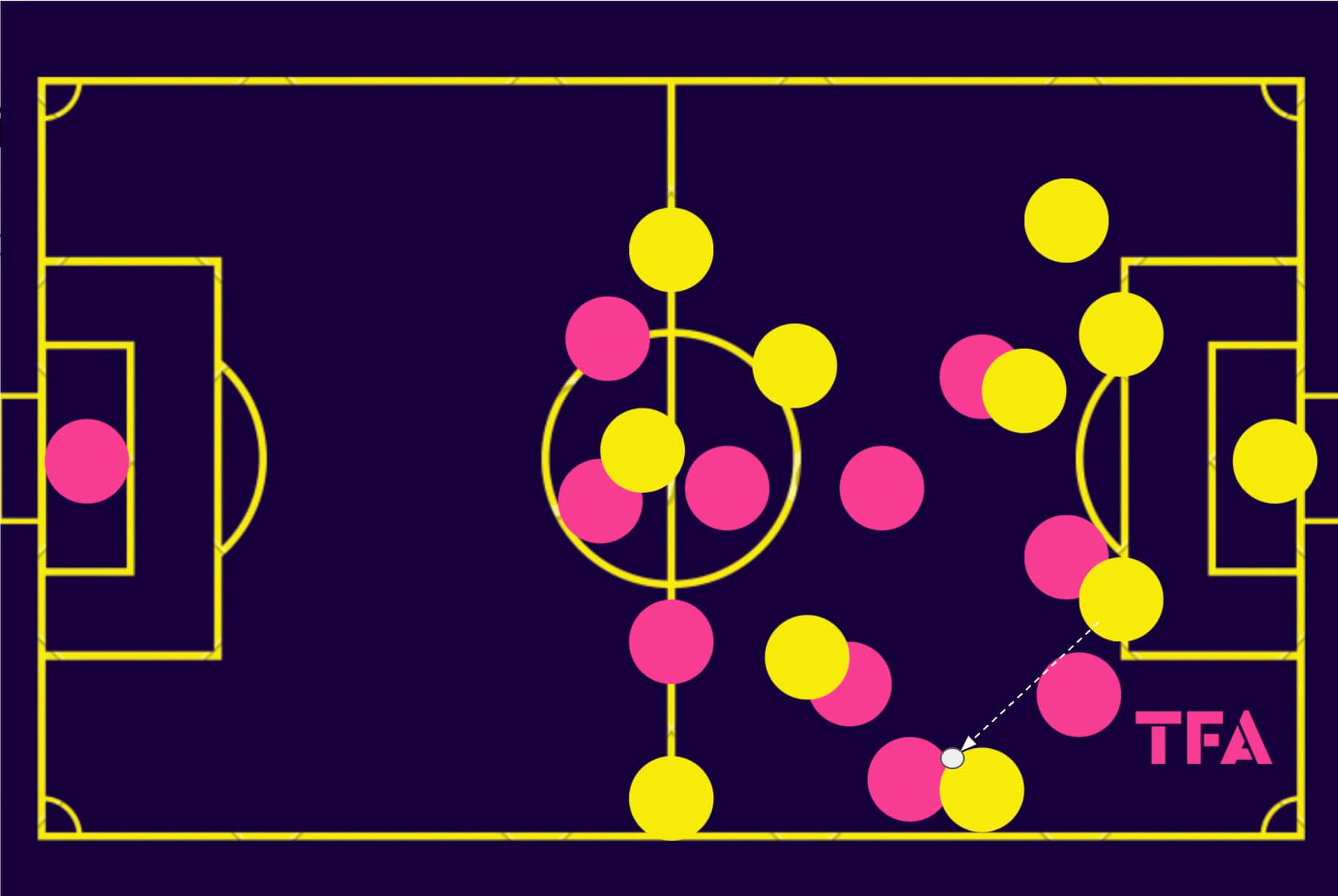
As this play progressed and the ball moved out to the wing, GAIS’ full-back advanced to close the opposition full-back down, leading the rest of the team’s shape to shift over to that side of the pitch to maintain compactness and ensure no major gaps opened up behind the most advanced pressers that the opponent could exploit.
Thanks to the full-back’s quick reactions and the rest of the team’s immediate support, GAIS was able to pin the opposition into a confined space, deny them a chance to progress, and cut off near-passing options. This made escape difficult and highlighted an excellently executed wide-pressing trap—a staple of Holmberg’s team.
Makrillarna generated goalscoring opportunities throughout 2024 as a result of high-pressing traps like this, giving them a chance to carve the opponent open with few passes thanks to their ability to force high turnovers and hit the opponent when they’re disorganised.
GAIS In Possession Tactical Analysis
While the most impressive aspects of their play from a tactical perspective this term have largely come without the ball, there’s still loads worth analysing about GAIS and their in-possession play.
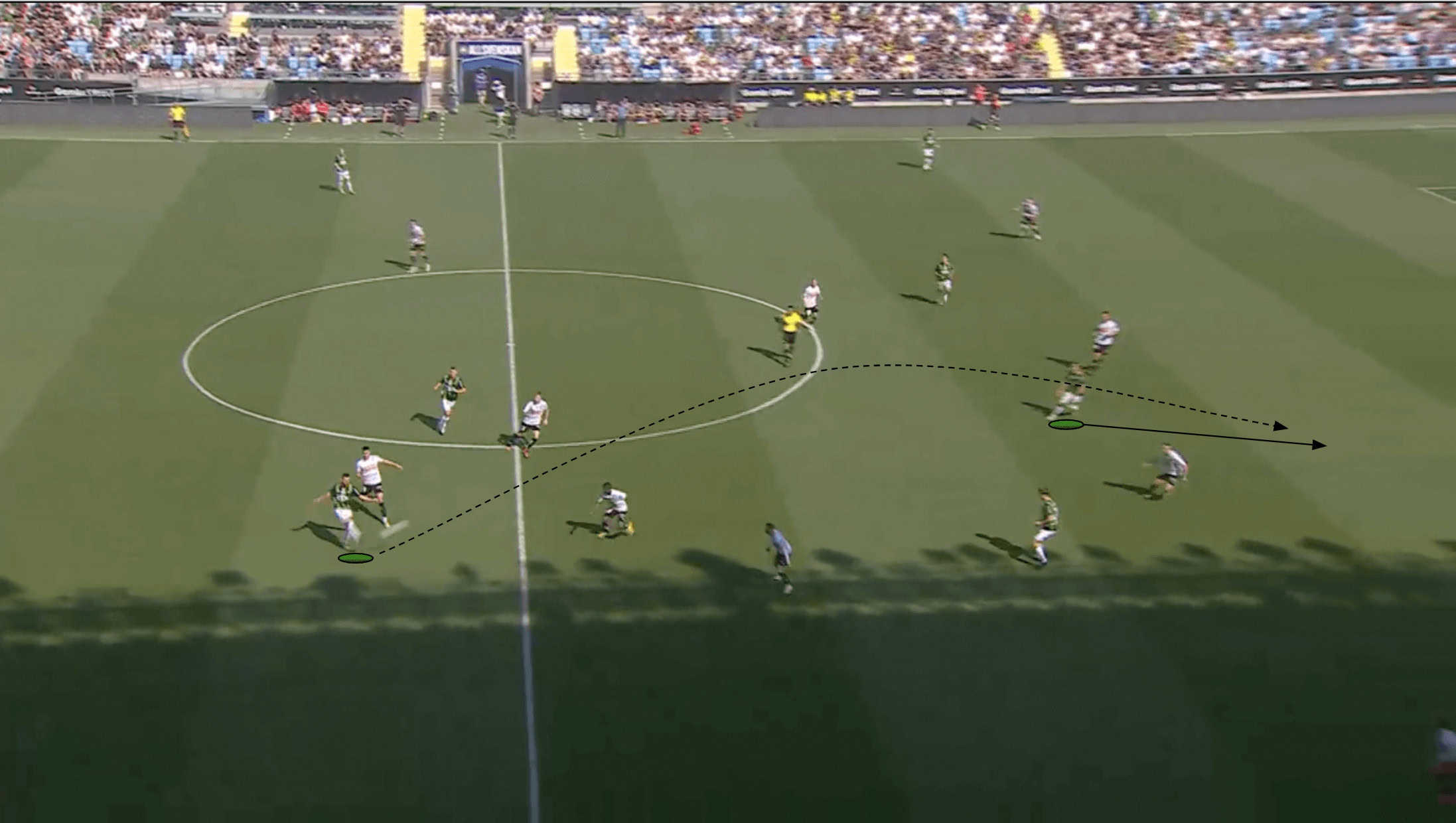
Just as when playing in transition, Holmberg’s GAIS are not shy of playing it forward in a direct fashion during settled possession play.
With pace and lots of movement in their forward line, they often perform well when they get the ball into the forward line quickly.
Suppose they can set up a 1v1 duel between one of their attackers and an opposition defender. In that case, they’ll fancy their chances of coming out on top of their fair share of those battles while they’ll frequently look for runs being made into the channels where they can target the attacker making the run via a long direct pass like we see in figure 6.
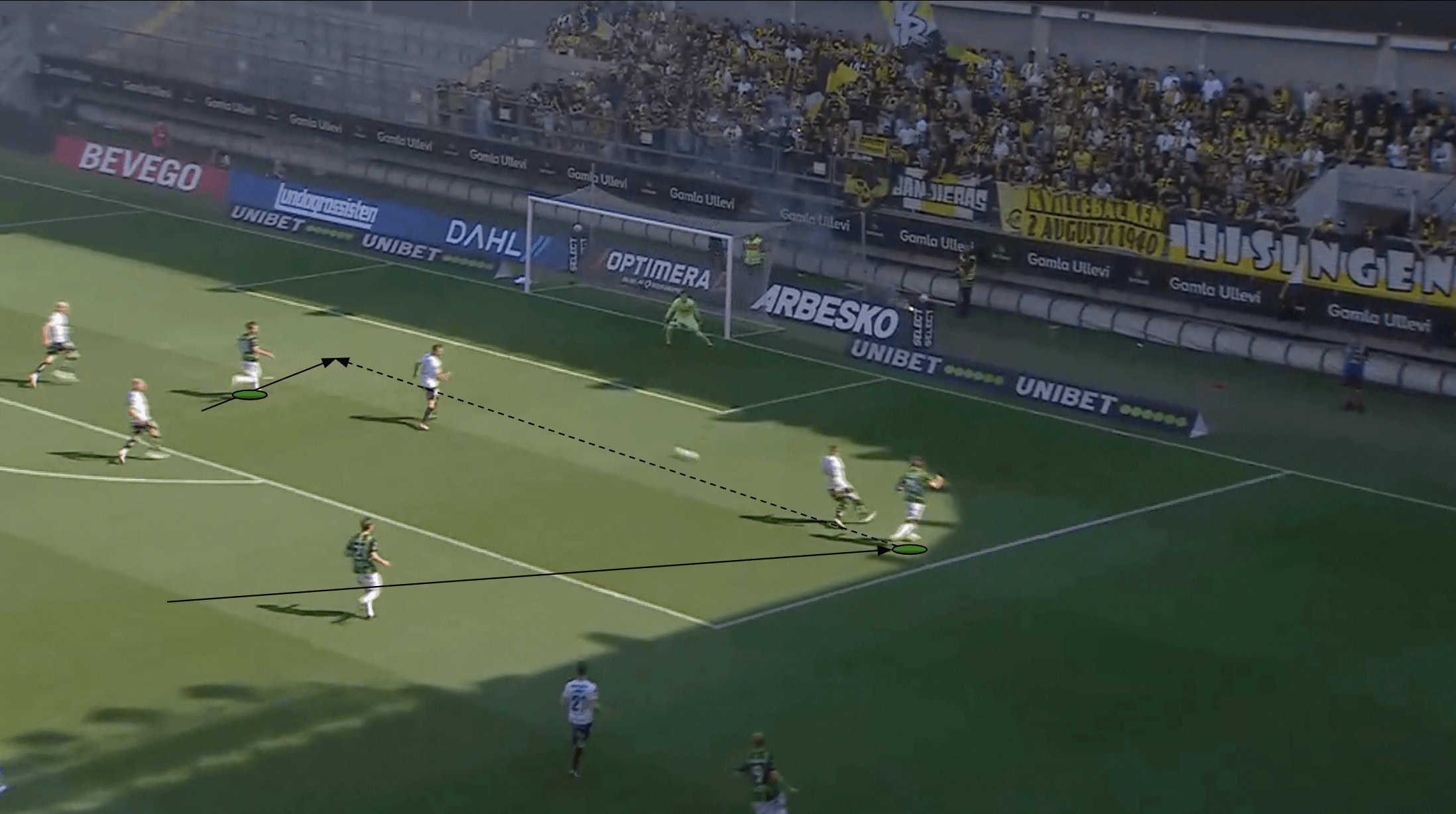
As this particular passage of play progresses, we see that the attacker who made the run brilliantly dragged a defender out wide into a 1v1, creating more space in the centre for a teammate to target with another probing run.
This teammate’s inviting movement was met with a well-timed and perfectly placed low-driven ball across the face of the goal, which he would go on to meet and convert.
This passage of play provides an example of how the energetic movement within GAIS’ forward line combines with their deep-lying players’ tendency to look for long-passing opportunities to create goalscoring opportunities within just a few passes quickly.
Many of GAIS’ goals this season have come from attacks that see them put together very few passes before scoring — a result of their dribble-heavy, transition-loving and direct-leaning in-possession tactics.
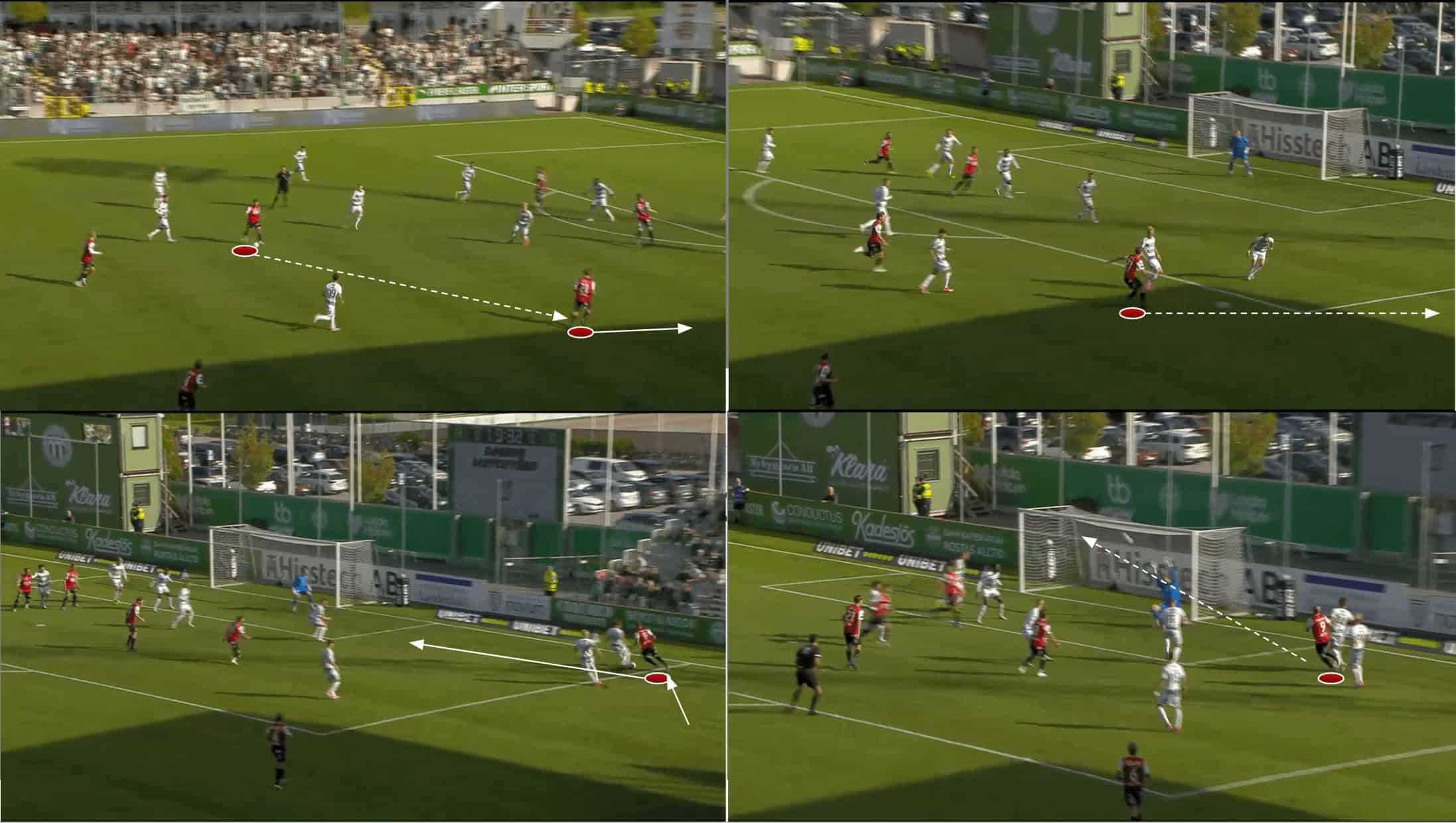
As mentioned earlier, GAIS has always ranked highly on the ‘dribbles per 90’ metric during Holmberg’s tenure, and that trend has remained the same in 2024.
Figure 8 shows an example of one Gustav Lundgren goal, which came as a result of the right-winger receiving in some space out on the wing and dragging a full-back into a 1v1.
He came out on top of it before converting from a tight angle just on the edge of the six-yard box. After winning his individual battle, he was able to carry the ball.
GAIS set this opportunity up firstly via their structure.
Their two wide central midfielders typically play in quite an adventurous fashion, while their wingers tend to position themselves wide, as Lundgren did in this example.
Here, as the right central midfielder received and began carrying the ball forward, the opposition full-back felt compelled to remain quite central to offer support to the midfielder, directly engaging GAIS’ right centre-mid in case the ball-carrier got past and threateningly found his way into GAIS’ box.
However, this allowed Lundgren loads of space out wide.
By the time the full-back got out to him, the winger was set and prepared to go past as he did, initially dragging the full-back to the right with timid touches and movement before bursting into the space behind the defender.
Gustav Lundgren Heat Map
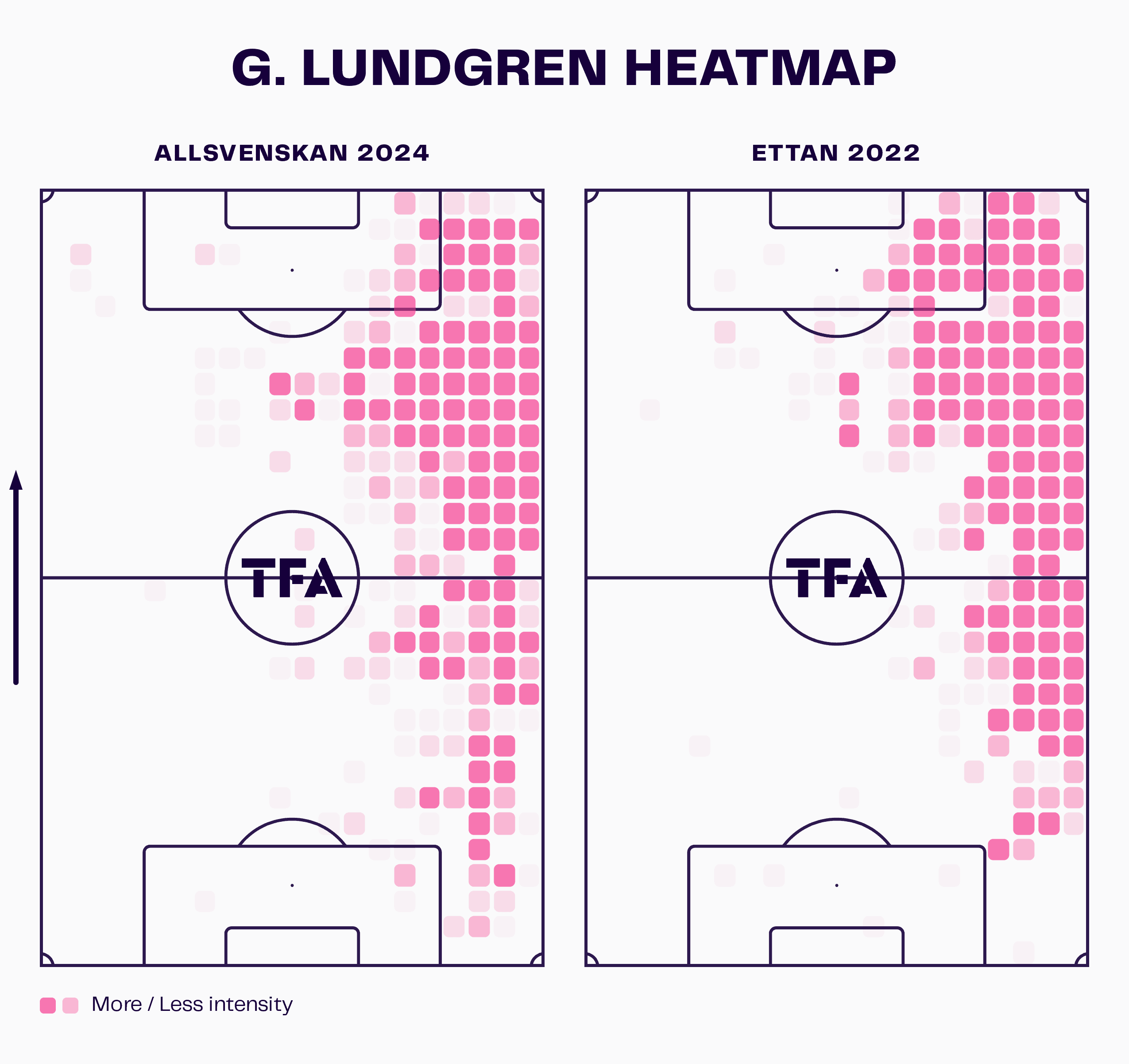
GAIS’ main right-winger since the third-tier days, Lundgren has played quite wide throughout his time under Holmberg, making this a role he’s quite familiar with and comfortable with at this point.
Gustav Lundgren Ball Progression Map
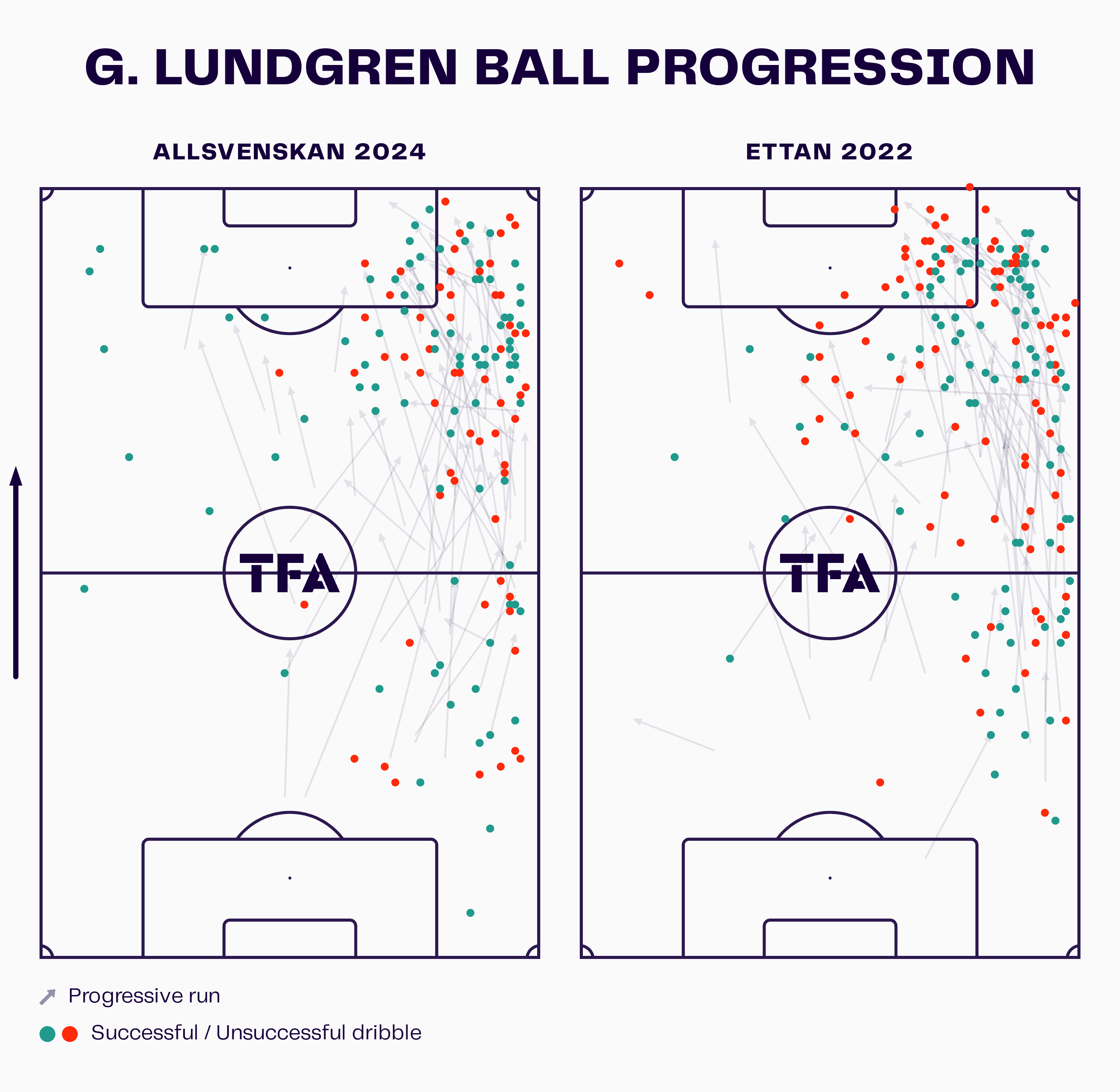
Figure 10 shows the locations of the right-winger’s dribbles this year and in 2022— again, two images that bear a striking similarity; Lundgren’s is a role within Holmberg’s setup that has remained consistent over the past few seasons.
Mervan Çelik Heat Map
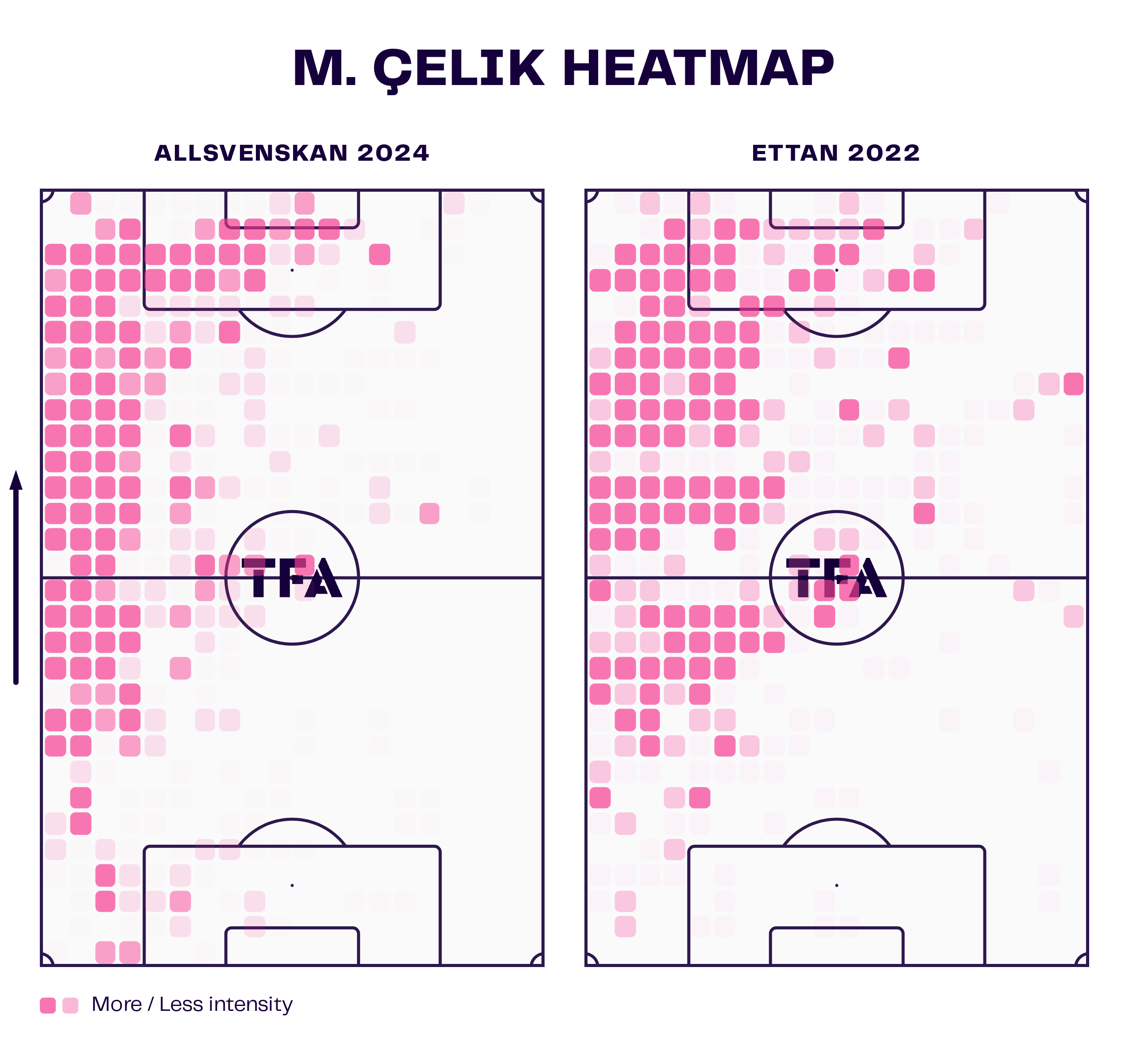
It’s a similar story for Mervan Çelik on the left, though the left-winger has found himself moving wider over the years as he hones his role as a final third width provider in Holmberg’s system.
Conclusion
In conclusion, Fredrik Holmberg’s style of play has worked wonders with GAIS over the past few years, quickly taking them from the third tier to the cusp of European football.
Elements of his tactics have changed as GAIS has scaled the Swedish football ladder—they’ve become more direct and transitional, for instance, by necessity.
However, they retain largely the same overall structure they’ve been using since 2022, with many similar roles and personnel all over the pitch, especially in midfield and attack.
Holmberg’s GAIS are a great example of how, when coached correctly, putting players into a familiar and functional system that accentuates their strengths and assigns them specific tasks they can clearly understand can make a massive difference all by itself.

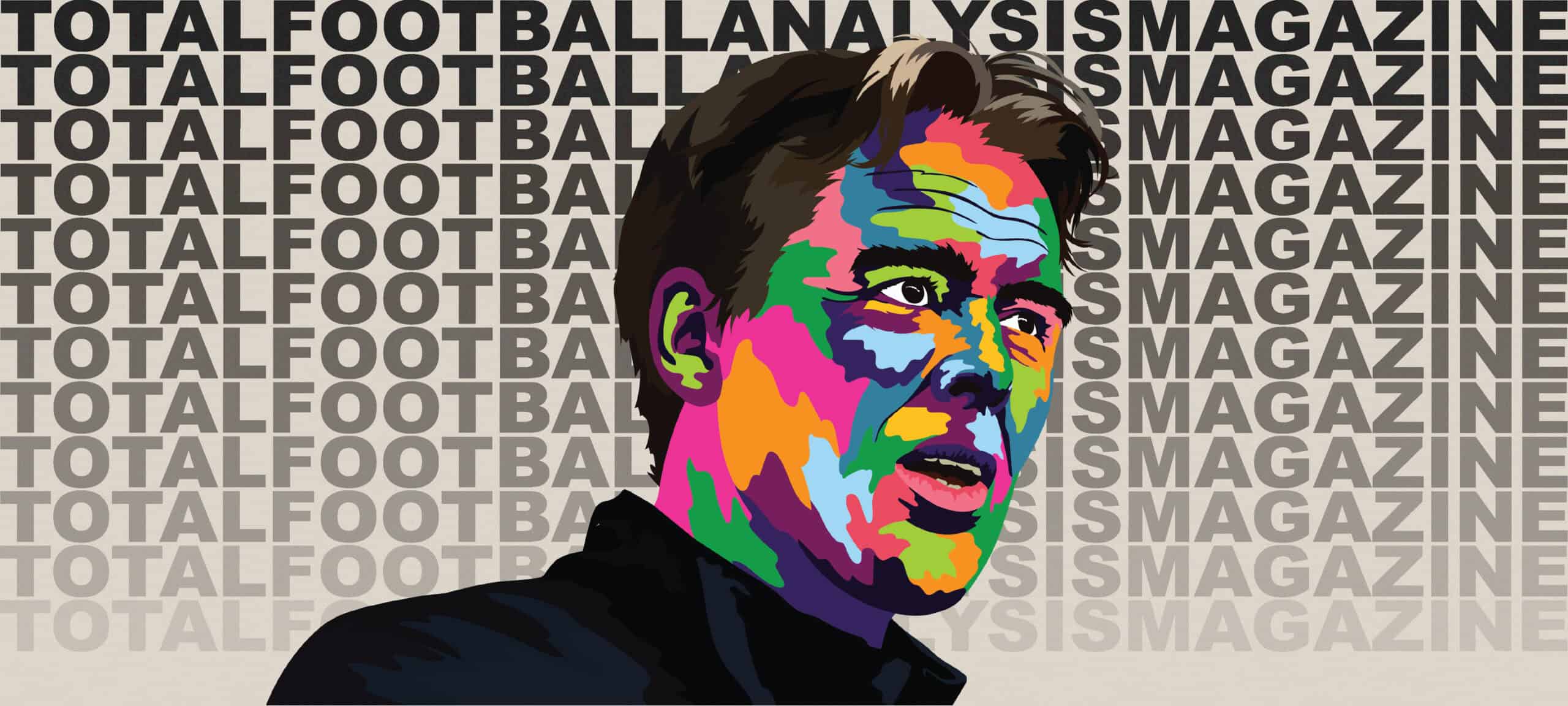



Comments